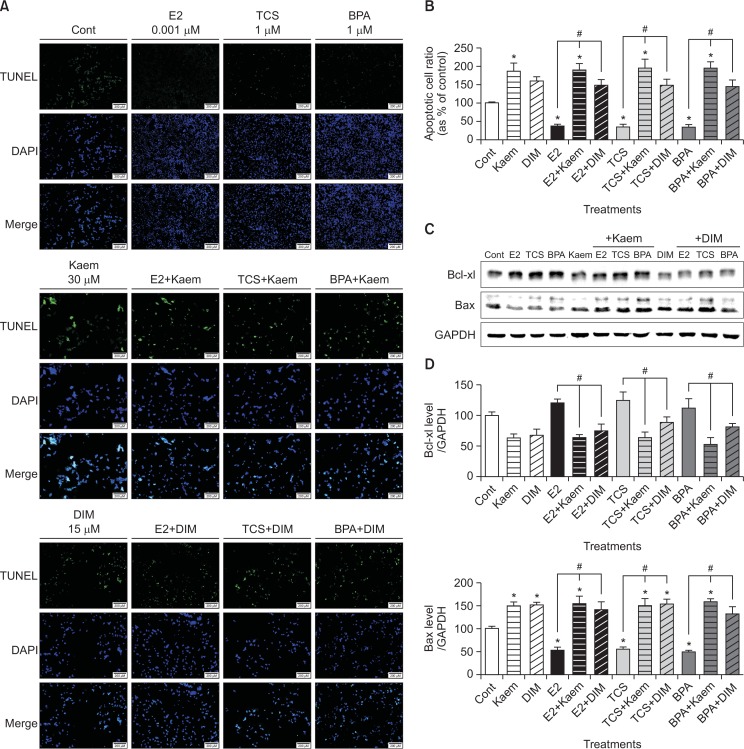Fig. 2.
Effects of E2, TCS, BPA, Kaem, and DIM on apoptosis of VM7Luc4E2 breast cancer cells. To detect the apoptotic cells, TUNEL assay was examined for VM7Luc4E2 cells treated with (A) 0.1% DMSO (a control), E2 (0.001 μM), TCS (1 μM), and BPA (1 μM), Kaem (30 μM) and a mixture of E2 (0.001 μM), TCS (1 μM) or BPA (1 μM) and Kaem (30 μM), and DIM (15 μM) and a mixture of E2 (0.001 μM), TCS (1 μM) or BPA (1 μM) and DIM (15 μM) for 48 h. (B) Fluorescence in response to each treatment was quantified using the Cell Sens Dimension software. (C) VM7Luc4E2 cells were treated with 0.1% DMSO (a control), E2 (0.001 μM), TCS (1 μM), BPA (1 μM), Kaem (30 μM), DIM (15 μM), a mixture of E2 (0.001 μM), TCS (1 μM) or BPA (1 μM) and Kaem (30 μM), and a mixture of E2 (0.001 μM), TCS (1 μM) or BPA (1 μM) and DIM (15 μM), respectively, for 72 h. After protein extraction from the cells, each protein band corresponding to Bax and Bcl-xl was detected by Western blot assay. (D) Quantification of each protein was accomplished by scanning the densities of bands on a transfer membrane using Lumino graph II. TUNEL and Western blot assays were replicated at least three times. *Mean values were significantly different from that of 0.1% DMSO (a control), p<0.05 (Dunnett’s multiple comparison test). #Mean values were significantly different from that of a single treatment of E2, TCS or BPA, p<0.05 (Student’s t-test).

